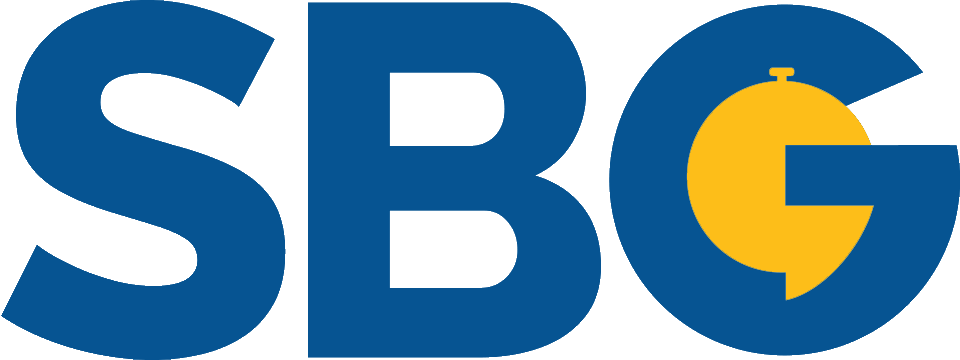In the ever-evolving landscape of business, one constant remains: the critical importance of hiring top-notch talent. Finding individuals who not only possess the requisite skills but also align with your organization’s values and goals can be a daunting task. However, fear not, for in this article, we will embark on a journey through the seven best recruitment practices that will help you attract, select, and retain the best people in the industry.
Summary
- What are Best Recruitment Practices for Hiring Top Talent?
- Which 7 Best Recruitment Practices are recommended?
- How to retain top talent?
- Conclusion
- How to Outsource your Recruitment Needs?
- Frequently Asked Questions (FAQ)
In this detailed guide, we delve into the seven paramount recruitment practices (BCPs) designed specifically for organizations eager to hire the finest applicants and fit recruits. These strategies are meticulously shaped to resonate with C-level personnel, guaranteeing you tap into the elite of the talent market. From designing captivating job descriptions to launching a proactive referral program and introducing innovative evaluation techniques, we ensure you’re well-equipped to secure the best.
What are Best Recruitment Practices for Hiring Top Talent?
To truly excel in the recruitment game, it’s vital to understand the core principles that underpin the best recruitment practices for hiring top talent. These practices are not merely about filling positions; they are about finding individuals who will drive your company’s success. Let’s delve into the intricacies of these practices.

Which 7 Best Recruitment Practices are recommended?
When it comes to hiring top candidates, you can’t afford to leave any stone unturned. Here are the seven best recruitment practices, each explained in detail:
BCP#1: Strategic Workforce Planning
Strategic workforce planning goes beyond standard recruit. It’s about proactively preparing for future talent needs by analyzing long-term goals, market trends, and data. Think of it as planting the seeds today for the skilled professionals you’ll need tomorrow.
The key is aligning this strategy with your overall vision. It’s not just hiring; it’s a strategic roadmap. Each hiring decision should be a purposeful step toward your long-term goals, ensuring you have the right people in key roles when the time comes. This alignment transforms your workforce into a dynamic force driving your ambitions. In short, it’s like having a crystal ball for employees, guaranteeing you have the right skills and people to lead your company where you want it to go.
If you are looking to optimize various aspects of HR in 2023, including payroll management, then you might find valuable insights in our blog post on ‘How Much Does It Cost to Outsource Payroll.’
BCP#2: Compelling Job Descriptions
Crafting a job description is more than just listing tasks. It’s a strategic narrative that can attract the right people. First, it should be clear about what the job involves. But it’s also a window into your company’s culture and values, helping candidates connect with your mission. A great job description should show how the role contributes to the bigger picture, inspire candidates, and use storytelling to make the job relatable. Plus, it should be inclusive, welcoming people from diverse backgrounds. In short, it’s a tool that not only attracts quality people but also aligns them with your company’s culture and mission, right from the start.
HR outsourcing can reduce costs and enhance your company’s efficiency. In our blog post on ‘How Does HR Outsourcing Reduce Costs‘ you can find valuable insights into the strategies that can optimize your HR functions while saving resources.
BCP#3: Leveraging Employee Referrals
To maximize the potential of your current employees as recruiters, foster a culture of referrals. Encourage and reward them for referring potential candidates. This not only engages your workforce but also makes them active participants in the recruitment process.
Employee referrals stand out because they can spot candidates who align seamlessly with your company’s culture, reducing the risk of misfits. It’s a chance to enhance diversity and inclusion by encouraging referrals from various backgrounds. Your employee recruiters can also serve as brand ambassadors, shaping your company’s image. Keep communication open with them to refine your recruit strategy based on their feedback, aligning it with evolving workforce needs. In essence, harnessing employee referrals not only taps into a talent pool but also strengthens your company’s unique culture.

BCP#4: Utilizing Data-Driven Recruitment
Data-driven recruitment is the modern approach to talent acquisition. It means using data strategically to find the best candidates. Think of data as your guide, helping you know where to find top applicants and how to optimize your recruitment process. One key benefit is finding the most effective sourcing channels, so you can focus your resources where they work best. Plus, you can monitor and adjust the hiring process in real-time, making it more efficient. Predictive analytics also lets you plan for future needs and identify potential skill gaps.
Data-driven recruitment is not just about efficiency; it’s about promoting diversity and ensuring a fair process. It also improves the overall candidate experience, attracting and retaining top talent. In a changing job market, it’s the tool that helps companies make informed and successful hiring decisions.
BCP#5: Structured Interviews
Structured interviews offer a fair and systematic method for assessing job candidates. They kick off by establishing clear job criteria and asking questions that delve into candidates’ past experiences. Scoring in these interviews is consistent, thanks to interviewer training and calibration sessions. This approach not only guarantees fair decision-making but also minimizes bias and ensures adherence to legal standards.
Moreover, structured interviews are an ongoing learning process. They encourage feedback collection after each interview, which is instrumental in refining the interview process continually. In essence, these interviews are not just about fairness; they also contribute to the constant improvement of the interviewing approach. This method fosters confidence that candidates are being evaluated objectively, ultimately enhancing the likelihood of selecting the most suitable fit for the role while refining the interview practices for the future.

BCP#6: Candidate Experience Optimization
In the competitive world of hiring, the candidate experience is your secret weapon. It starts from the first contact and shapes how candidates see your company. To make it positive, remember respect, transparency, and engagement. Show respect for their time and effort, be clear about the job, and personalize interactions. Keep things consistent for all candidates and offer feedback and closure. A great candidate experience not only makes candidates feel valued but also boosts your company’s reputation, attracting more quality people in the future. In the hunt for talent, a positive candidate experience sets you apart.
BCP#7: Onboarding Excellence
The onboarding process is a pivotal phase in an employee’s journey within your company. It’s the first meaningful interaction new hires have after accepting an offer, setting the stage for their entire tenure. Beyond the formalities, onboarding is about equipping them with the tools, knowledge, and cultural understanding needed to thrive. It’s a bridge to your organization’s culture and values, fostering a sense of belonging and shared purpose.
Effective onboarding significantly contributes to talent retention by reducing early turnover and increasing employee engagement. It’s not a one-time event but an ongoing journey that includes feedback loops for continuous improvement. In the competitive talent landscape, a well-structured onboarding program becomes a critical differentiator, ensuring that quality people not only join but also excel within your company, ultimately contributing to its success.
If you are interested to learn more about the benefits of outsourcing HR functions like benefits administration, this article will help you discover why many companies are leveraging outsourcing to streamline this crucial aspect of HR management.
How to retain top talent?
Hiring top applicants is only half the battle; retaining them is equally crucial. Here are three best practices for retaining your valuable assets:
BCP#1: Company Career Development and Recruiting Opportunities
In today’s competitive talent market, emphasizing Career Development Opportunities is paramount for a company focused on recruiting and retaining top talents. It’s not merely a checkbox. It’s a strategic investment in employees’ futures. Companies that prioritize career development provide a clear pathway for advancement, outlining roles, and expectations while encouraging applicants to apply and grow. Such a focus offers skill-building opportunities, aligns with the company’s organizational goals, fosters transparent communication, and bestows meaningful recognition. This approach acts as a roadmap, signaling to candidates that your company doesn’t just hire; it also provides a platform for their professional advancement. By honing in on Career Development Opportunities, your company preps its workforce for the future, becoming an irresistible hub for high-quality individuals.
To delve deeper into how companies are optimizing their HR functions to empower employees to reach their full potential, we suggest you read our blog post on ‘How to Outsource HR.’
BCP#2: Company’s Competitive Compensation, Hiring Benefits, and Recruiting Strategies
For a company intent on recruiting top-tier talents, offering competitive compensation and benefits is indispensable. These perks not only hire but also acknowledge an employee’s worth through just compensation and an array of benefits covering health, financial security, and a harmonious work-life balance. By consistently aligning with market standards, your company exhibits its dedication to reward its employees justly. Customization caters to diverse preferences, and by championing financial wellness, your company promotes informed decisions, alleviating stress, thereby heightening job contentment. Essentially, these methods cement your company as a long-term career choice for superior employees, where they genuinely feel cherished and backed.

If you are curious about how compensation strategies are shaping the employer-employee relationship in 2023 you can check our blog post on ‘Why Do Companies Outsource HR‘ to explore the evolving dynamics of compensation and benefits in today’s workplace.
BCP#3: Recruiting and Employee Engagement with Recognition
Employee engagement and timely recognition are foundational for a motivated and committed workforce within a company. Engagement transcends mere work satisfaction. It embodies employees feeling profoundly intertwined with their roles, the company’s mission, and their peers, propelling them to actively contribute to the company’s ascendancy. The company’s recruiting strategy should recognize and laud these contributions, be they monumental or minuscule. Authentic and timely recognition amplifies motivation and ingrains a sense of worth.
Consistent company communication and feedback, crucial for recruiting, enable employees to voice their insights and reservations, nurturing involvement and showcasing that their opinions are valuable. Alignment with the company’s ethos fosters a collective sense of mission, steering dedication to triumph. Beyond mere recognition, employee engagement encompasses avenues for personal growth, from skill augmentation to career elevation, fashioning an environment ripe for perpetual evolution. At its core, these tactics aren’t mere HR protocols; they sculpt a vibrant workplace milieu that nurtures dedication, motivating employees to apply themselves and evolve into the company’s treasured assets.
We understand that the financial aspect of employee engagement and recognition is also important. Reading our blog post on ‘How Much Does HR Outsourcing Cost‘ will help you gain insights into the cost-effective strategies which companies employ to maintain a highly engaged and motivated workforce.
Conclusion
In the fast-paced realm of business, the knack for hiring and retaining superior candidates isn’t merely a tactic; it’s foundational for prosperity. This article sheds light on seven crucial recruitment practices, curating a potent blueprint for your enterprise to hire the right applicants and fit recruits.
Strategic Talent Management: The journey commences by syncing your hiring approach with overarching objectives and drafting job descriptions that echo your company’s ethos and purpose.
Employee Engagement and Referral Program: The power of employee engagement coupled with genuine recognition fosters allegiance. Further, promoting a robust referral program not only magnifies your talent reservoir but also ensures you hire individuals who seamlessly fit into your culture.
Data-Driven Excellence: The leverage of data and analytics invigorates recruitment. Additionally, structured interview protocols ascertain impartial assessments. Comprehensive onboarding, in turn, primes the canvas for triumph.
By adopting and refining these methodologies, businesses can allure and secure top-notch individuals, guaranteeing sustained success in the ever-evolving corporate arena. It transcends mere strategy; it encapsulates the quintessence of flourishing and pioneering.
How to Outsource your Recruitment Needs?
Outsourcing your recruitment demands can be a pivotal strategy to tap into specialized proficiency and optimize your hiring timeframe. Discover how to adeptly outsource your hiring necessities to guarantee you attract the ideal fit recruits and hire the best candidates.
Client’s Idea
Our partnership will start by scheduling a call with you to understand your business requirements and goals. Based on all the information, we will prepare a customized proposal with a scope of work, pricing, and other relevant details. The proposal will also highlight the benefits of outsourcing digital marketing positions, such as access to a more incredible talent pool and efficacy in executing your projects while being cost-friendly.
Setting up the right team
Once we sign the Agreement, our HR department will start with the screening and recruitment process, so we can set up a team of marketing experts to work on your project. Once we get a pool of qualified candidates, we will present them to you for review. You would be able to interview and evaluate the candidates in the last round to determine if they are a good fit for your business.
Facilitating and onboarding
Once you get your dedicated Belgrade team who works exclusively for you, we will start the onboarding process. This would include setting up their office and workspace, providing necessary equipment or tools, and ensuring they receive the required training.
Execution
The marketing team will execute the project as per the agreed-upon SLA. The team will use various methods to generate leads, including email marketing, social media outreach, cold calling content creation, running PPC campaigns, etc. We are keeping up to date with all the necessary information quickly since you have a designated project manager explicitly working for your business/project.
Maintenance and training
We will provide comprehensive training for the newly recruited marketing team. This training will include product knowledge, sales techniques, and other relevant skills. We will ensure that your freshly established marketing team is equipped with the tools and resources necessary to succeed in the industry in which you operate.
Managing and reporting
As mentioned, each project has from our side project manager who ensures everything runs smoothly in the office. He is your single point of contact, overseeing the project, so you can rest assured that all your requirements will be met and you will receive regular updates on the progress of your project.
Frequently Asked Questions (FAQ)
What are the Best Recruitment Practices for Hiring Top Talent?
Best recruitment practices are the strategic cornerstone for attracting top employees and fit recruits in 2023. These practices involve aligning your organization’s career goals with applicants’ skills and aspirations. The job hiring process recognizes that recruiting isn’t just about filling a job but creating strategic employer partnerships. These practices focus on a meticulous selection process, value diversity, and inclusion, and rely on data-driven decision-making for continuous improvement. They guide your organization in attracting the right applicant, ensuring that you not only hire employees but establish strategic collaborations with those who will propel your success in the dynamic world of remote work.
Which 7 Best Recruitment Practices are recommended?
For employers keen on recruiting top applicants, understanding these seven essential recruitment practices is vital. It starts with strategic workforce planning on platforms, aligning a job hire with long-term goals, and drafting job descriptions that reflect your company’s culture and mission. A referral program leverages your team’s insights, while data and analytics pinpoint the best sourcing channels in the recruiting landscape. Structured interviews ensure unbiased evaluations, and a positive candidate experience, especially on platforms like LinkedIn, positions your organization as an employer of choice. Comprehensive onboarding solidifies the integration of new hires into your company. These practices not only attract but ensure a seamless fit of recruits, making companies appealing hubs for industry expertise and preparing them for successful remote work in 2023.
How to retain top talent?
Discover strategies to keep your employees connected and dedicated to your company’s mission, including career development, competitive compensation, and recognition:
Career Development Opportunities: People are on the lookout for more than just a job on LinkedIn; they’re searching for growth trajectories within esteemed companies. Highlighting clear career pathways, skill-building chances, mentorship, and introducing new challenges are integral to a potent career development strategy.
Competitive Compensation and Benefits: Competitive compensation packages are undeniably crucial for retaining top professionals. In a fierce job market, ensuring that your pay and perks match or exceed industry standards reinforces your reputation as a prime employer.
Employee Engagement and Recognition: Beyond mere compensation, fostering engagement and bestowing recognition are retention cornerstones. An enthused and valued workforce views their roles not just as a job but as core components of the organization’s future, especially in a remote setting in 2023.
How to Outsource your Recruitment Needs?
Recruitment outsourcing, or RPO (Recruitment Process Outsourcing), is a transformative approach, especially when combined with platforms like LinkedIn. It’s about teaming up with specialists who excel in identifying, attracting, and overseeing staff, all while leveraging state-of-the-art software. These professionals possess a deep understanding of the talent and recruiting landscape, offering economical solutions and harnessing advanced technology.
A pivotal advantage is financial efficiency, as RPO providers are often more streamlined than in-house recruit teams. They adapt to fluctuating needs, allowing your teams to zero in on primary company tasks. Moreover, with extensive talent networks on platforms like LinkedIn, they guarantee access to a diverse applicant pool. Overall, recruitment outsourcing modernizes your hiring process, optimizing efficiency, curtailing costs, and expanding your talent spectrum, all while emphasizing your core goals in the ever-shifting world of recruiting and careers in 2023.



